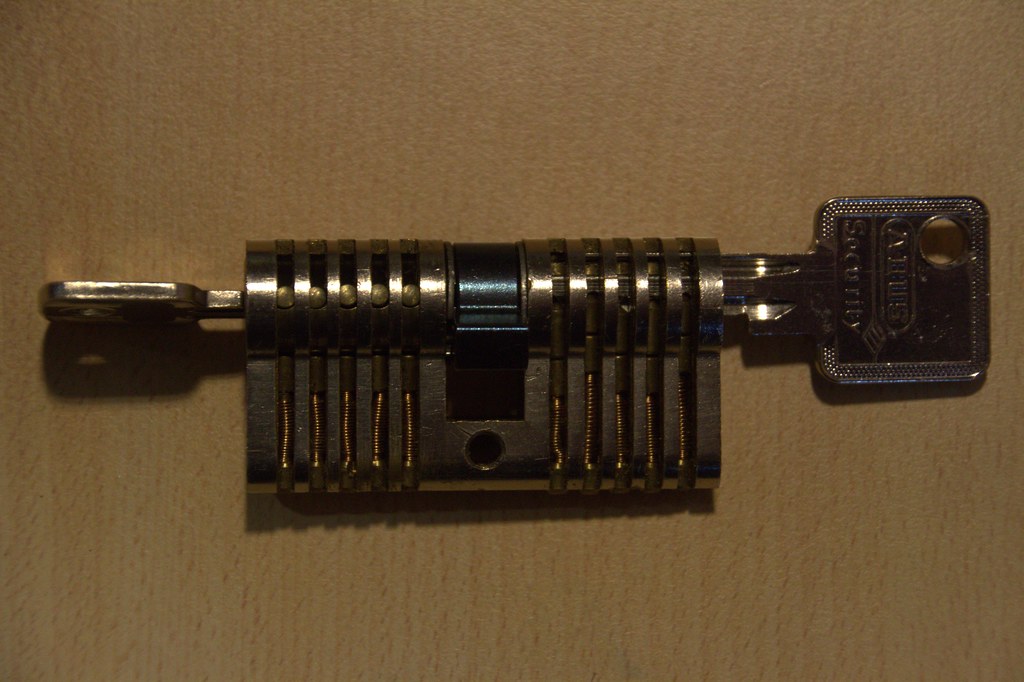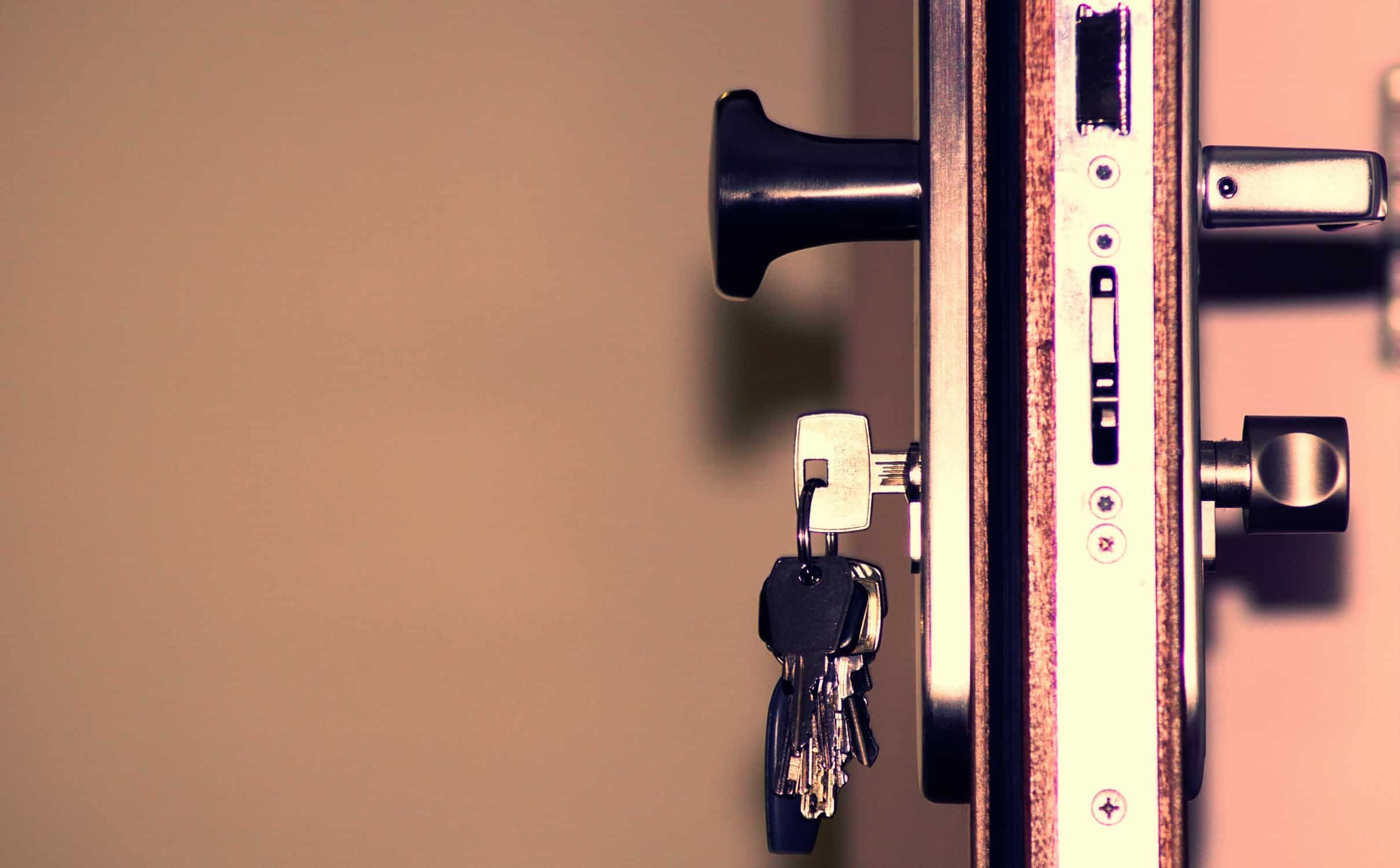Patio doors are, by their very nature, points of transition. They are simultaneously an entryway and exit, a glass membrane between two different parts of your home décor. On one side is your interior décor, on the other side your patio and exterior décor, and this glassy door acts as the barrier separating the two of them. All of that is well and good – until that barrier is opened up or broken down. Like every other door in your home, your patio door needs locks. That said, patio doors are different from other doors in your home, and so are their locks. Since you’re here, you’re clearly wondering how patio door locks work. So pull up a chair and let’s explore the how, why, and what.
The truth is, there are many patio door lock options that a consumer can choose from. Each has their pros and cons and I’m not here to judge which one is “best”. It’s a very difficult question to answer, and reasonable minds can differ! But in case you’re wondering, here are the options laid out in a handy chart.
| Type | Strengths | Weaknesses |
|---|---|---|
| Clasp locks | Common, non-intrusive, inexpensive, easy to open/close | Not as strong as other options |
| Foot bolts | Very strong, much more difficult to break | Easy to forget to lock |
| Cylinder locks | Familiar | Fairly difficult to install on patio doors, costly |
| Security bar | Most strong option, almost impossible to break | Impossible to unlock from the outside, unsightly |
Not content with a simple graph? Me either, so here are
Clasp Locks
These locks are probably the most common for sliding glass doors. There are several reasons for this, not the least of which being that they are reasonably easy to use.
How They Work
So, how does this patio door lock work? They have a clasp that closes around the inside shaft area of the door. By the handle you use to open and close the door, you should see a lever. This is used to open and close the clasp. Doing so allows the clasp to open or close around the shaft, and in turn it locks the door.
There are several advantages of this. Clasps are not very intrusive, and so can be fitted to your patio doors without transforming them into a mess of iron bars or bolts. What’s more, the small size of these clasps also means they are generally inexpensive. Add to that the fact that they are easy to open and close, and the reason for their popularity becomes apparent.
Foot Bolts
These options are great for those looking to lock their door from the bottom up. A foot bolt is just what it sounds like – a bolt that fastens into place at the foot of your patio door.
How They Work
These locks typically feature a square-shaped base and are installed in the lower corner of your door. The bolts are activated by a spring. When you open the door, the spring and, thus, the bolt contracts, thereby allowing the door to glide open with ease. On the other hand, once you choose to close the door, the opposite is true. The spring-loaded bolt comes out, takes away the open space necessary to open the door, and presto! It’s locked and safe.
Cylinder Locks
While we said above that traditional locks and keys aren’t always possible with patio doors, that isn’t entirely the case. If you really want one, you can install a cylinder lock. That said, while these can be safer due to the fact that you need the key to open the door, finding the right cylinder lock for your patio door can be challenging. You need to make sure that the lock in question can work with patio doors and have it installed, which often means professional installation services and, thus, spending more money than the other options on this list.
Ideally, these locks should be fastened to the end of the patio door. That said, some patio doors require them to be fastened to the center instead. In addition, some patio doors require a lever to be used for lowering a stationary bar into place for added security. Every patio door is different, so if you opt for this choice, you need to make sure that the cylinder lock system you choose is compatible with every facet of your patio door.
How They Work

As you can see from the image above, the keys turn cylinders attached to springs. This in turn rotates the “cam”. When the cylinders turn in a certain direction, the cam applies pressure on the bolt, forcing it to open. If you sit and study the above picture for a bit, it begins to make sense how this patio door lock works.
Security Bar
This is where the conflict between aesthetics and security really kicks in. On the one hand, there is no denying that a security bar is one of the best options on this list from a purely security-based perspective. On the other hand, there is also no denying that having a big iron bar fastened on or near your door can deal a serious blow to your décor scheme.
If that doesn’t matter to you, or you think you have a way to make it work with your décor setup, you’ll want to fasten it at the bottom of the door. This ensures that it is as inconspicuous as possible while providing resistance so as to prevent your door from opening. Remove the bar to allow for movement.
If you choose to use a security bar in an unfastened fashion – that is, to place it in the track where the sliding glass door opens and closes, so as to restrict its movement that way – it can be more inconspicuous and inexpensive.
How They Work
These “locks” are the most simple. The majority of the time, the security bar will simply rest on the door tracks, preventing them from opening. Essentially you’re bracing the door with the door frame. This option is sturdy and very difficult to compromise.
Which Is Best?
Like I said at the beginning of the article, it’s hard to tell you which patio door lock is best. Best for what? If you’re simply looking for a cheap, easy way to keep intruders out, you’ll probably want a security bar. If you want a visually appealing option, foot bolts and cylinder locks are your best bet. You know more about your individual situation than I do (and now you know how the most popular patio door locks work).
A Final Word on Affordability
In an ideal world, no one should ever have to think about whether or not a home security measure is “affordable” or not. At the same time, in an ideal world we wouldn’t need home security measures, now, would we? The fact is we live in the real world with real practical concerns, including the cost of different home security measures for patio doors.
Among these options, cylinder lock and keys are easily the most expensive. They require specialized locks and installation services, which drive up the cost. At the other end of the spectrum are things such as clasp locks and foot bolts. Not only are these on the smaller side, they can typically be ordered and installed on your own, helping you to save money.
That said, you never want to skimp on home security measures.
Take the time to review your situation and decide which patio door lock style is right for your home.

